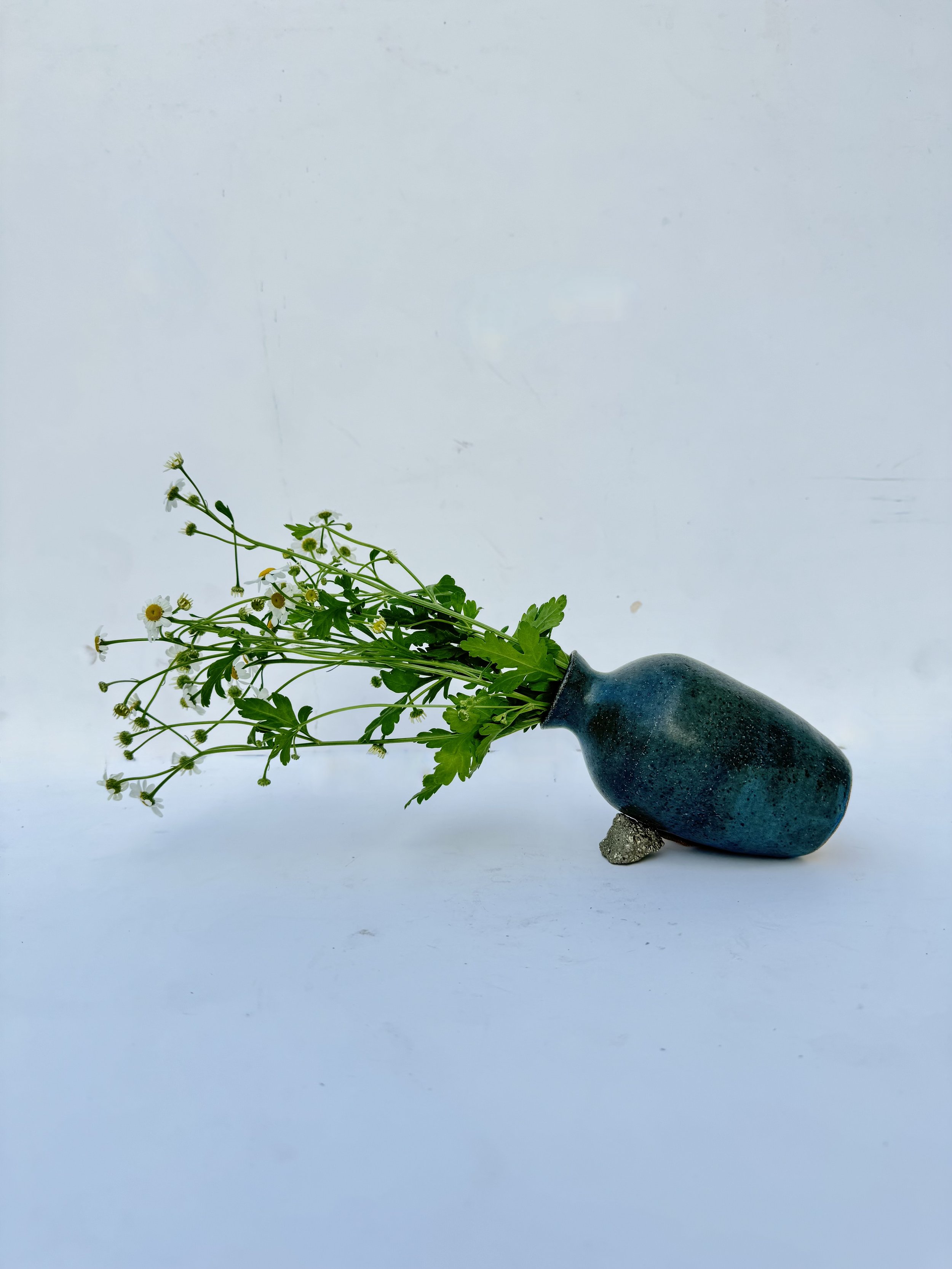 Image 1 of 1
Image 1 of 1


Cocci No. 4
This series of vessels was inspired by a recent trip to Rome. While walking the streets I discovered Monte Testaccio, a small mountain in the center of the city comprised entirely of discarded ancient amphorae. After some research, I learned that the hill was originally formed in the 2nd Century AD. Farmers would send shipments of pressed olive oil in giant amphorae up the Tiber river, and upon their arrival, merchants would then siphon off the oil into smaller vessels for sale to local Romans. The large shipping vessels were then tossed into the ‘dump,’ where, over the course of 100 or so years, they began to pile into the site they are today. I was inspired by the thought of man using organic materials to create an inorganic utilitarian shape, and that new form then returning back to the earth. These vessels are all an attempt at depicting the eventual decomposition of ceramics, and the incongruence of the meeting point between man and terroir.
This series of vessels was inspired by a recent trip to Rome. While walking the streets I discovered Monte Testaccio, a small mountain in the center of the city comprised entirely of discarded ancient amphorae. After some research, I learned that the hill was originally formed in the 2nd Century AD. Farmers would send shipments of pressed olive oil in giant amphorae up the Tiber river, and upon their arrival, merchants would then siphon off the oil into smaller vessels for sale to local Romans. The large shipping vessels were then tossed into the ‘dump,’ where, over the course of 100 or so years, they began to pile into the site they are today. I was inspired by the thought of man using organic materials to create an inorganic utilitarian shape, and that new form then returning back to the earth. These vessels are all an attempt at depicting the eventual decomposition of ceramics, and the incongruence of the meeting point between man and terroir.